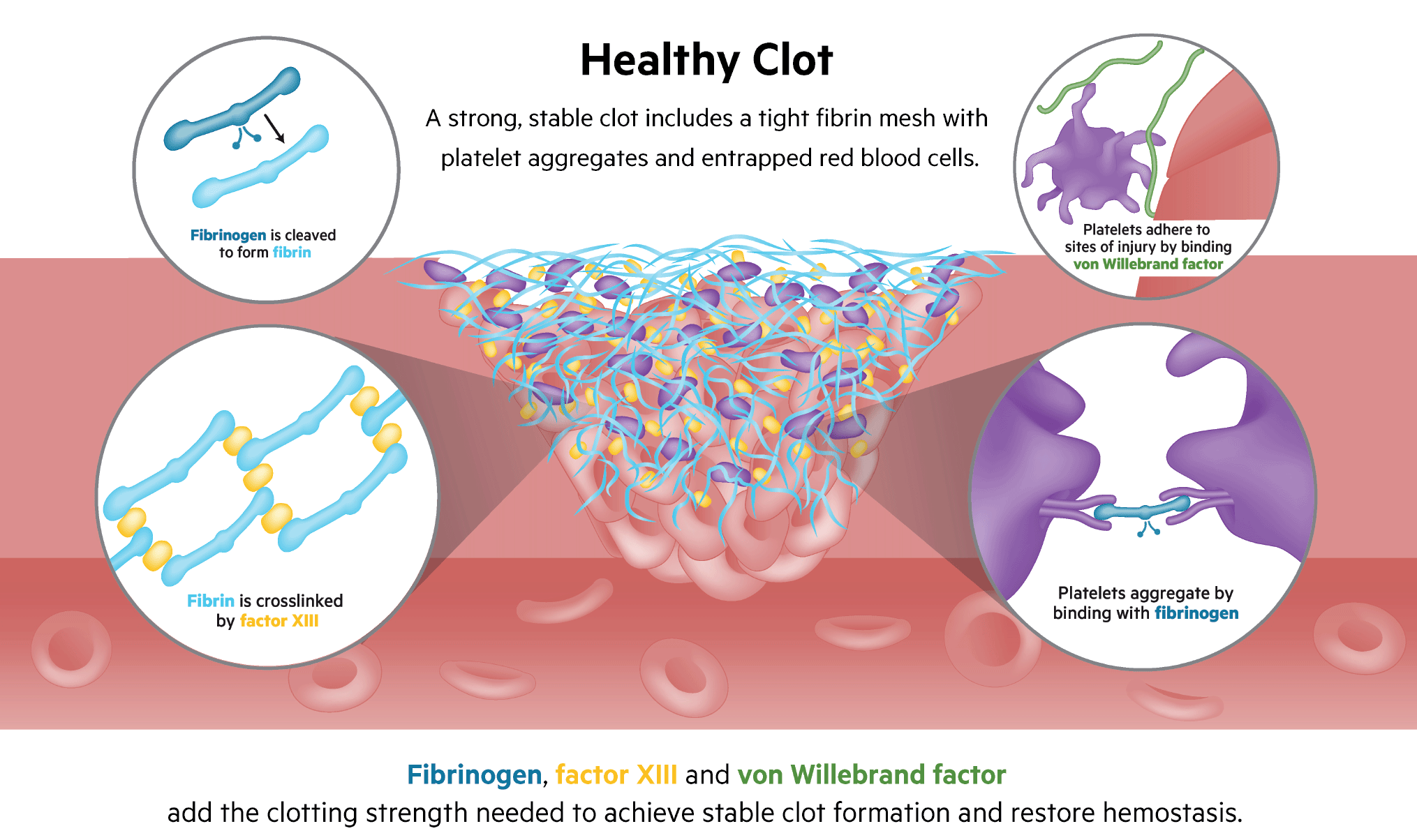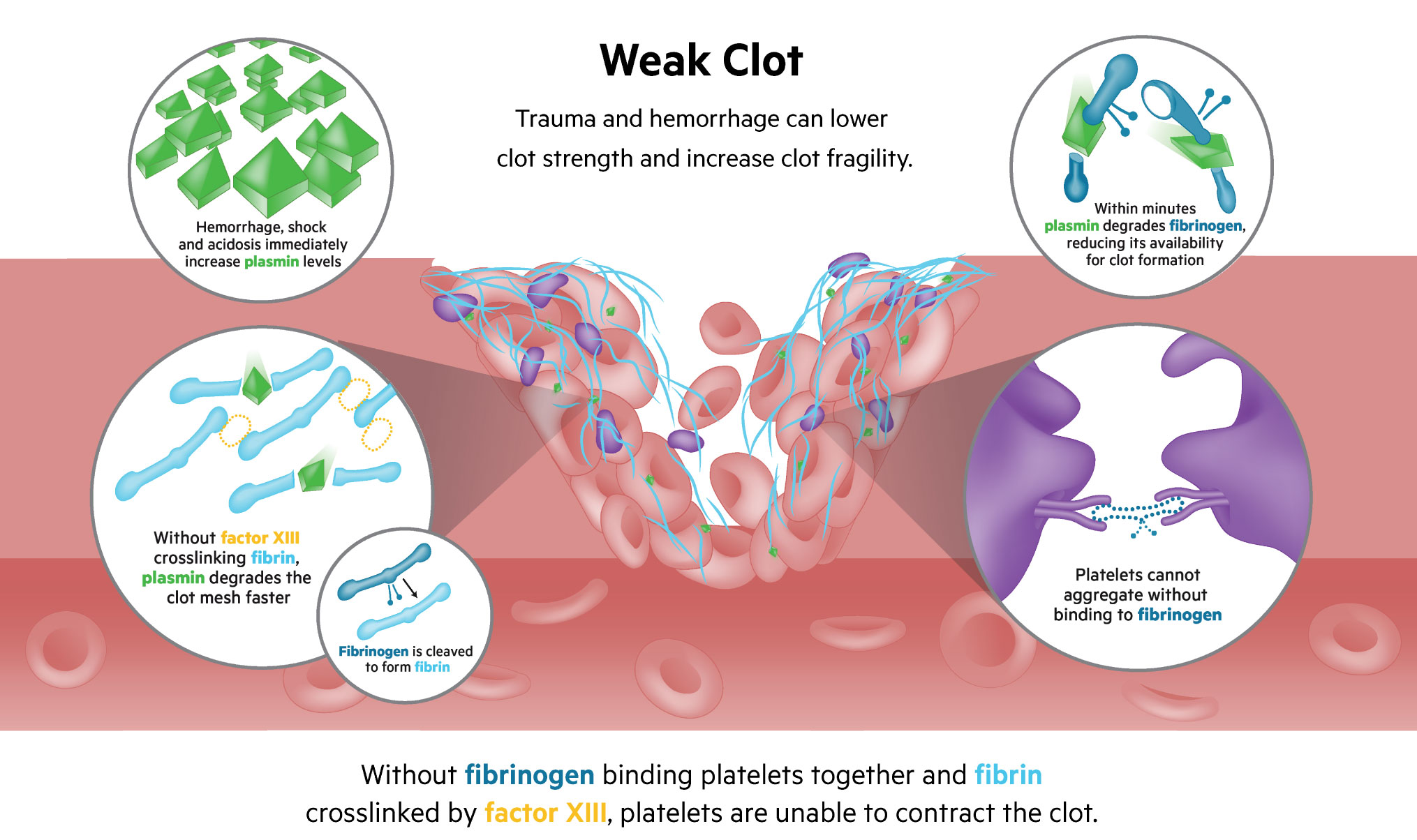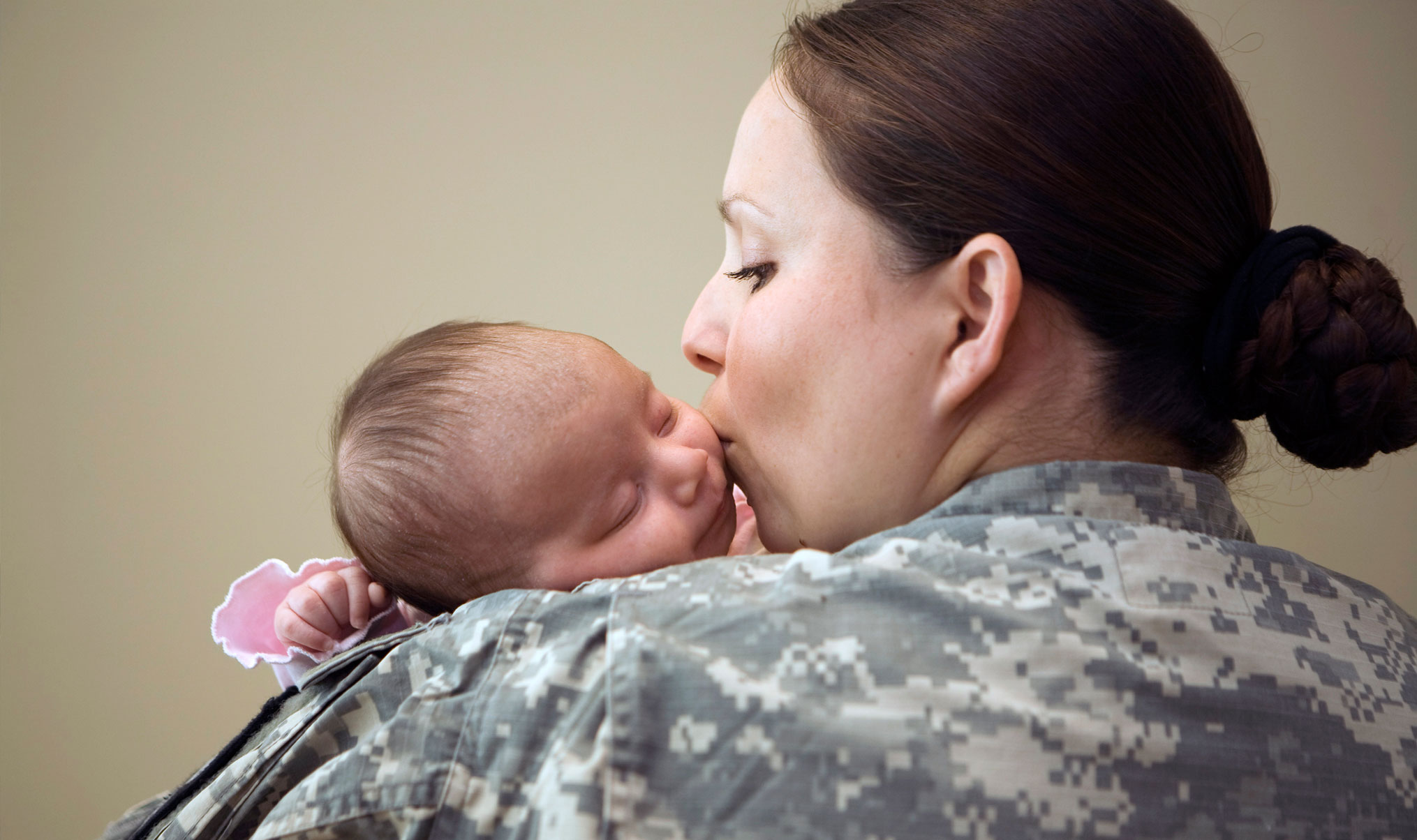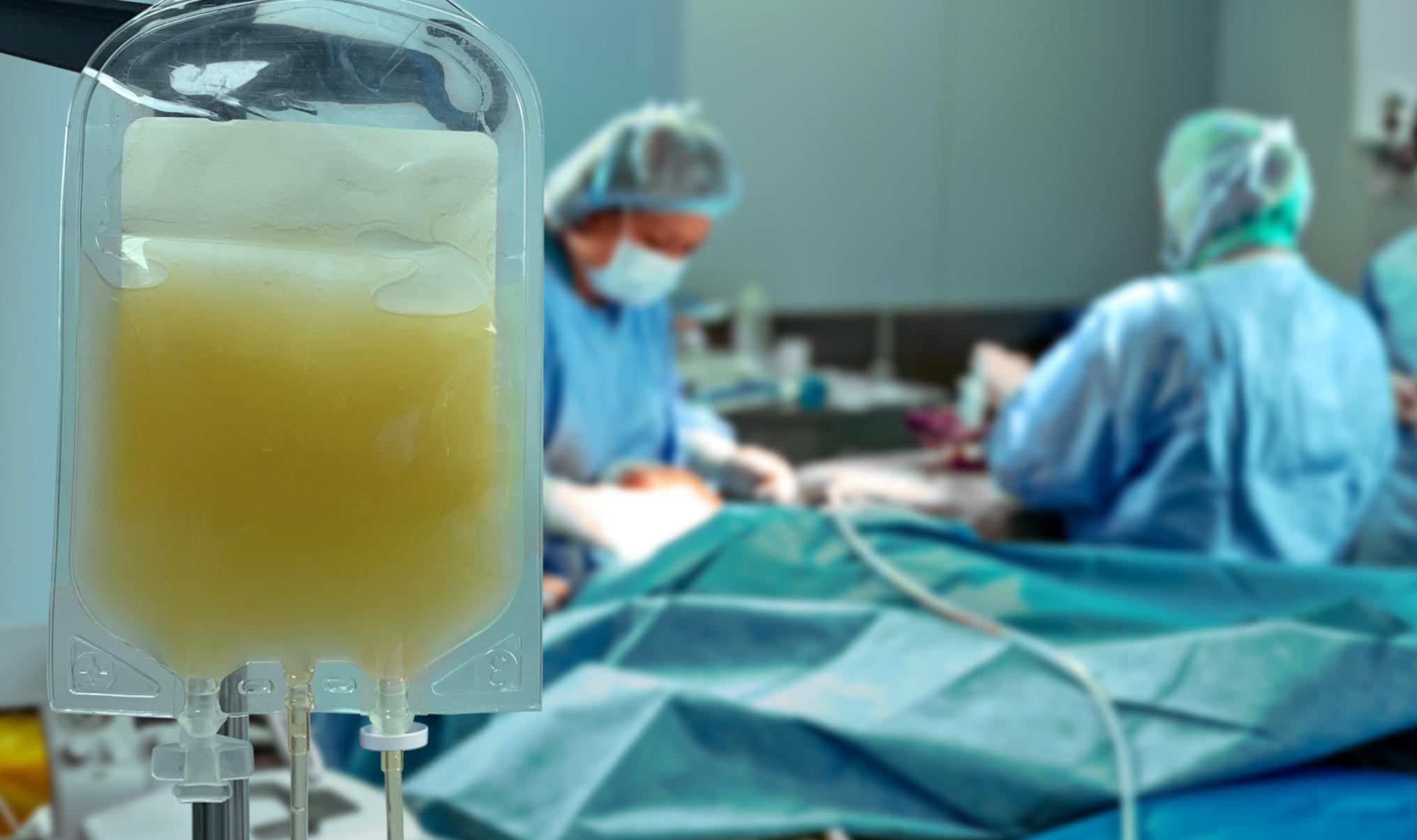Clot Generation
Successfully regaining hemostasis during a hemorrhage requires a complex balance of clot initiation and construction.
Clot Initiation:
Factors important to clot initiation, such as tissue factor, von Willebrand Factor (vWF), factor VII and thrombin, are abundant in early hemorrhage.1,2 Platelets bind to the injured endothelial cell wall via vWF to initiate clot formation. Thrombin cleaves fibrinogen to make fibrin for clot mesh construction.3
Healthy Clot Construction
Fibrin creates a mesh around red blood cells and platelets, covering the vessel injury. Activated factor XIII connects and interlaces the fibrin strands, strengthening the clot and providing resistance to plasmin mediated degradation.3
Fibrinogen, factor XIII and von Willebrand factor add the clotting strength needed to achieve stable clot formation and restore hemostasis.

Weak Clot Pathology
In traumatic hemorrhage, fibrinogen, factor XIII,3,4 and platelets are depleted rapidly by a combination of use and plasmin degradation.5
Without fibrinogen binding platelets together and fibrin crosslinked by factor XIII, platelets are unable to contract the clot.
Reduced availability for these factors results in:
- Loose clot formation
- Failure to cover vessel injury
- Rapid clot degradation

INTERCEPT® Fibrinogen Complex

Replenishing these key components is important to stable clot formation and hemostasis.2,7


